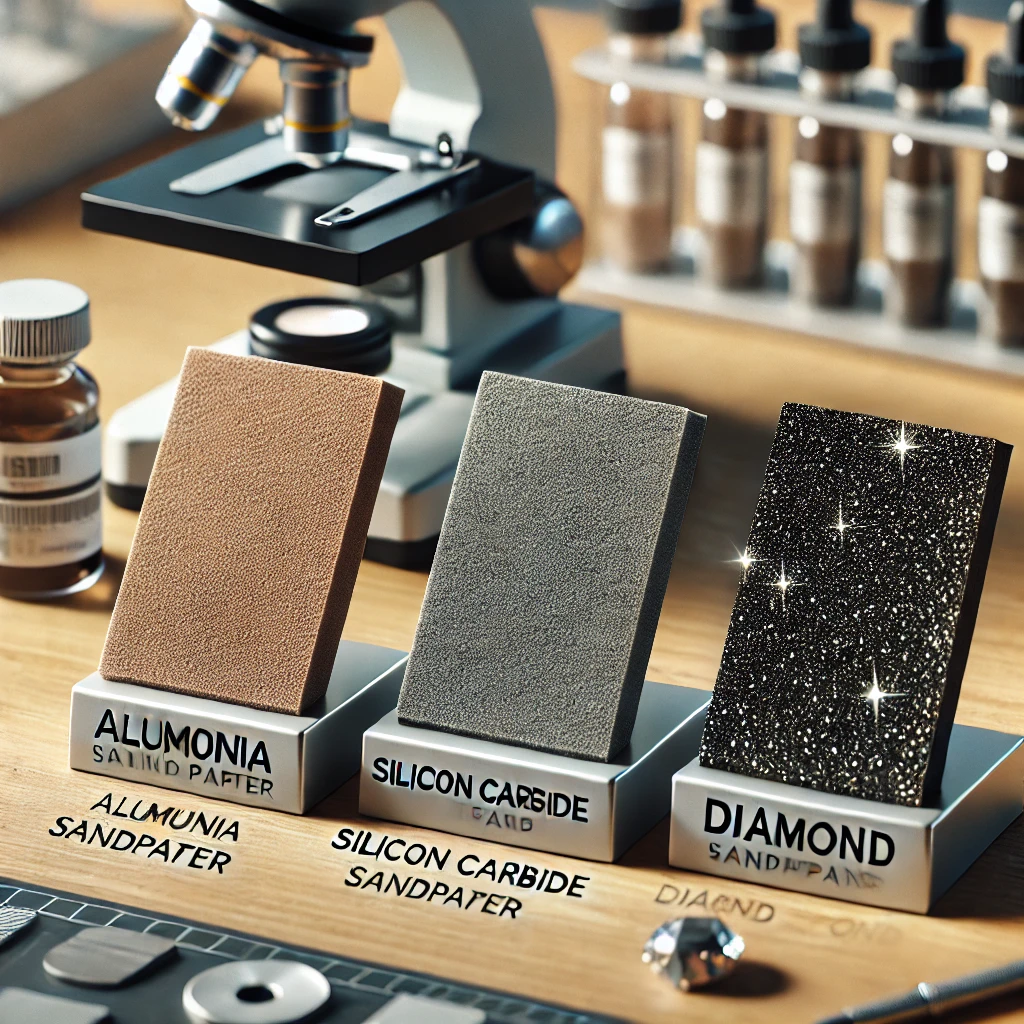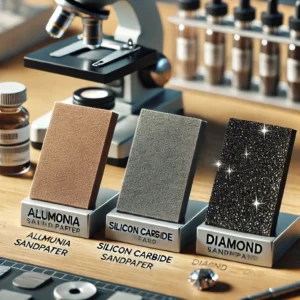
Introduction to Online Trading of Moku.com
On May 20, 2022, Moku.com online trading project was officially launched. Transfer the transaction of grinding enterprises from offline to
Home » Understanding Different Types of Metallographic Sandpaper


Metallographic sandpaper is an essential tool in material preparation for microscopic analysis. It ensures a smooth and even surface for accurate and detailed observation. In metallography, three primary types of sandpaper are commonly used: Alumina (Aluminum Oxide), Silicon Carbide, and Diamond Sandpaper. This article explores these types, their features, applications, and advantages.
Alumina sandpaper is known for its toughness and durability. It is commonly used for rough grinding and intermediate stages of metallographic preparation.
Silicon carbide sandpaper is sharper and more efficient than alumina. Its crystalline structure ensures precise cutting, making it ideal for fine grinding and polishing.
Diamond sandpaper represents the pinnacle of abrasive technology. Its unmatched hardness makes it the ultimate choice for advanced material preparation.
Choosing the appropriate metallographic sandpaper depends on the material type, preparation stage, and desired surface finish. Here’s a quick guide:
| Material | Recommended Sandpaper |
|---|---|
| Hard metals (e.g., steel, alloys) | Alumina or diamond sandpaper |
| Soft metals (e.g., aluminum, copper) | Silicon carbide sandpaper |
| Brittle materials (e.g., ceramics, glass) | Silicon carbide or diamond sandpaper |
For rough grinding, coarse grit sizes (P240–P600) are ideal. For fine grinding and polishing, finer grits (P800–P2500) are recommended.
While the initial cost is a factor, consider durability, performance, and overall cost-effectiveness when selecting sandpaper.
Metallographic sandpaper plays a crucial role in sample preparation. Alumina sandpaper is perfect for durable grinding, silicon carbide sandpaper excels in precision and smoothness, and diamond sandpaper stands out for advanced, high-end tasks.
For high-quality metallographic sandpaper, Abrasivestocks offers a wide range of products tailored to meet diverse industrial and research needs. Visit www.abrasivestocks.com.au to explore the best solutions for your abrasive requirements.

On May 20, 2022, Moku.com online trading project was officially launched. Transfer the transaction of grinding enterprises from offline to

–The Fourth Phase of Abrasive and Abrasive Tools Training Program of Materials School of Henan University of Technology Successfully Concluded

MK ONLINE TRADING May 20 Moku Online Transaction Officially Launched Yang Heng, CEO of Moku.com, said that the online